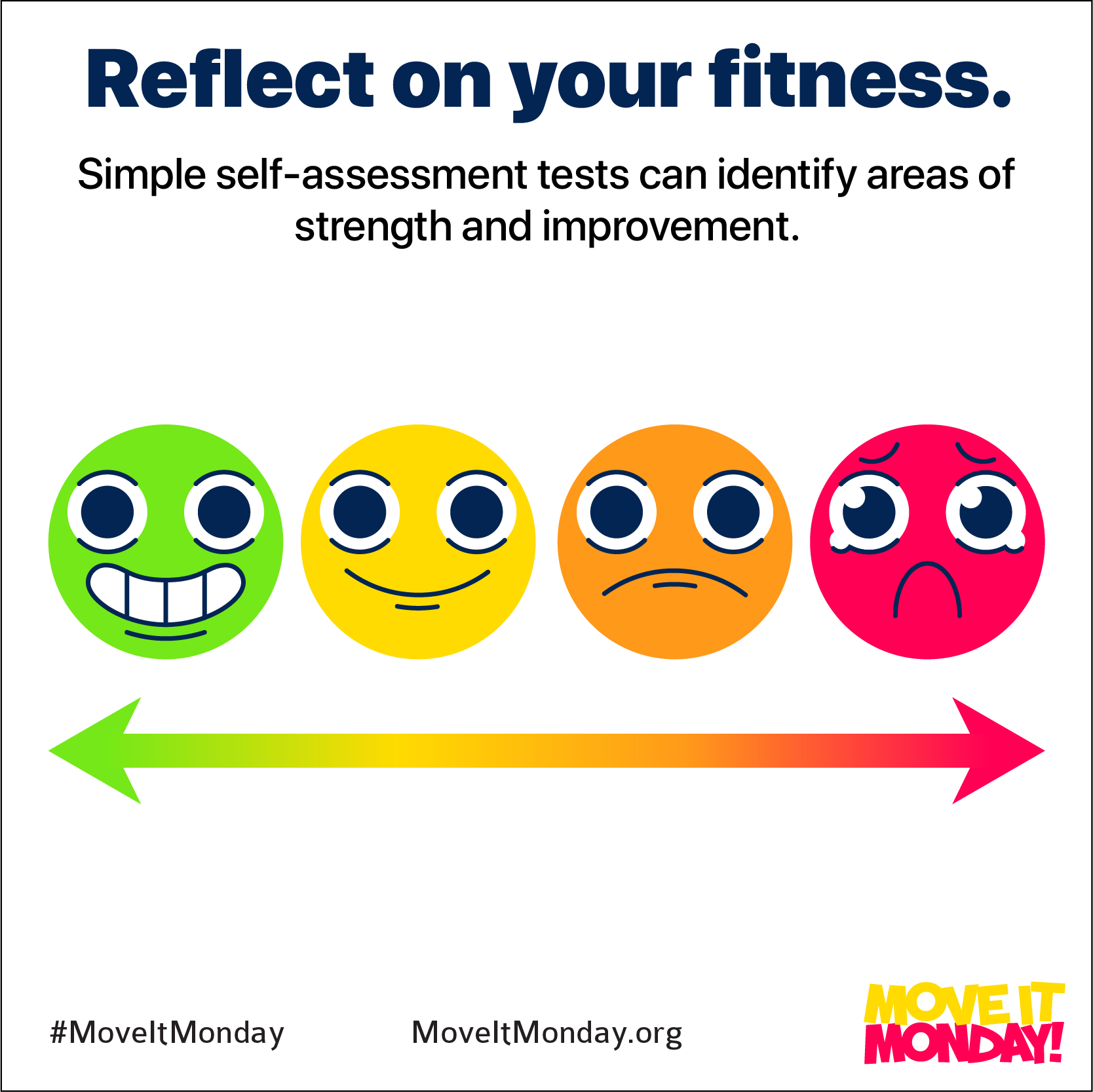Measure Your Fitness Level with These Simple Self-Assessments
An important way to avoid injury and stay physically active is to understand your fitness level and know your health numbers. A quick self-assessment can help you identify which parts of your body are strong and healthy, and which may require some extra attention.
The individual tests can help measure different elements of physical fitness such as strength, endurance, balance, and flexibility. By being aware of your strengths and limitations, you can more confidently approach all aspects of physical activity, whether it’s going for a walk through the woods, grabbing something off a shelf, or even getting up off the couch.
And although the self-assessment is designed for an older population, individuals of all ages can benefit from a better understanding of their current fitness levels. To get started, checkout the individual tests below — you don’t need any special equipment, just a stop watch, some measuring tape, and a healthy dose of enthusiasm.
The Back Scratch Test
Measures general range of motion in the shoulders.
- Grab a yard stick or measuring tape and a partner.
- Stand up and place one hand back over the shoulder and reach as far as possible down towards the middle of your back with your palm touching your body and the fingers pointed down.
- Place the other arm behind your back, palm facing outward and fingers upward and reach up as far as possible trying to touch the middle fingers of both hands.
- Your partner is there to help direct you.
- If the fingertips touch, your score is zero; if they’re apart, measure the distance between the fingers to calculate your score.
The Two-minute Step-up
Measures aerobic endurance.
- Stands up straight next to a wall and place some tape or a marking on the wall between the knee cap and the hip.
- March in place for two minutes, making sure you lift the knees to the height of the mark on the wall. Resting is allowed.
- Count the number of times your right (or left) knee reaches the mark. Stop after two minutes and record your score.
- Individuals ages 65 and older should aim for around 100 repetitions.
30-Second Arm Curl
Measures upper body strength.
- This test requires the use of a 5- / 8-pound weight (for women and men respectively).
- Sit in a chair with your palms facing your side with your upper arm braced against your body.
- As you curl, focus the movement to your lower arm and rotate your hand so your palm is facing you upon completion of the motion and slowly return to the starting position.
- Complete as many curls as you can in 30 seconds. Individuals ages 65 and older should aim for between 15 – 20 repetitions.
Eight-Foot-Up-and-Go
Measures coordination and agility.
- This test requires a stop watch, chair, measuring tape, and a cone or marker.
- Set the chair against the wall and place the marker 8-feet away.
- Start the test seated with hands on the knees and feet flat on the floor.
- Start the stop watch and stand and walk (don’t run) as quickly as you can around the marker before returning to the chair to sit down. Individuals ages 65 and older should aim to perform the test in six seconds or less.
Chair Stand
Measures leg strength.
- This test requires a chair and a stop watch.
- Place the chair against the wall and sit in the middle of the seat with feet on flat on the floor and should-width apart.
- Cross your arms and place them against your chest. From the sitting position, stand up fully and then sit down.
- Count the number of full repetitions. Individuals ages 65 and older should aim to perform between 14 – 19 repetitions in 30 seconds.
